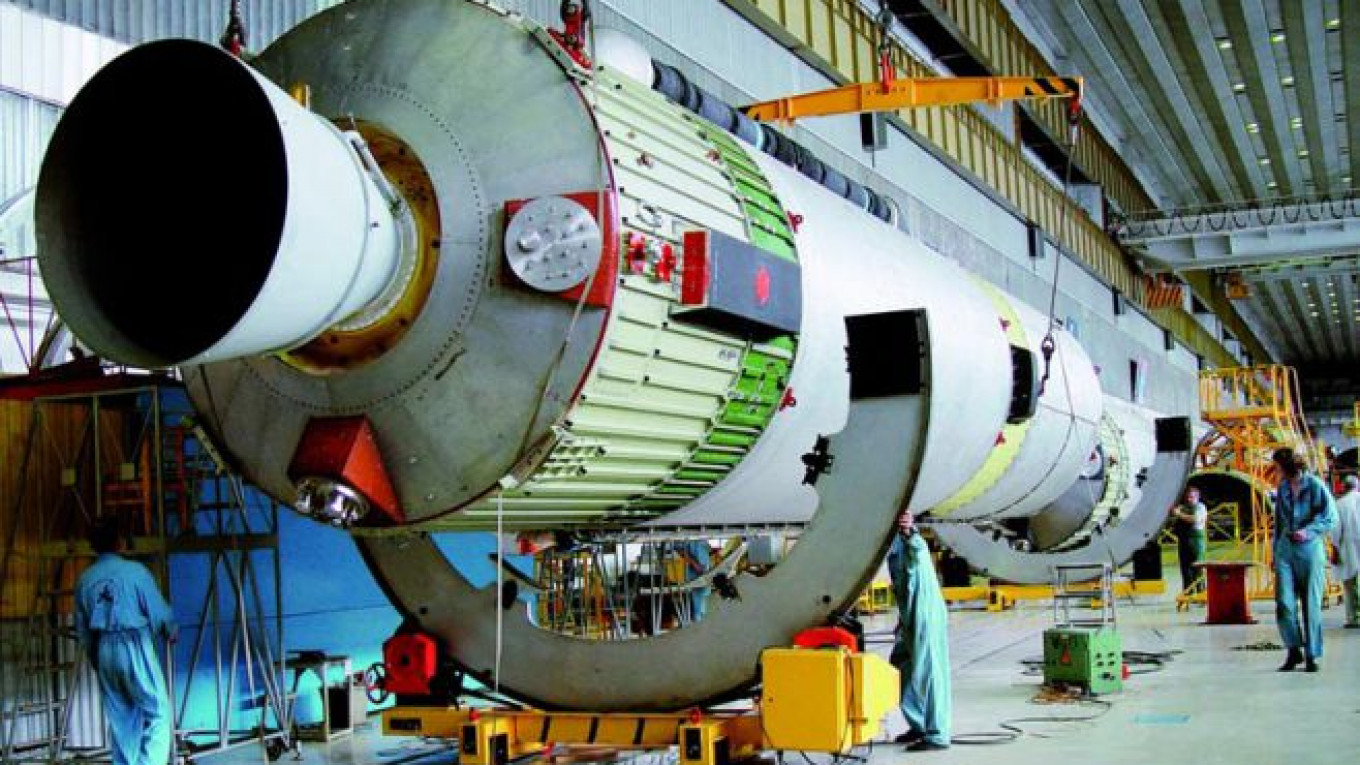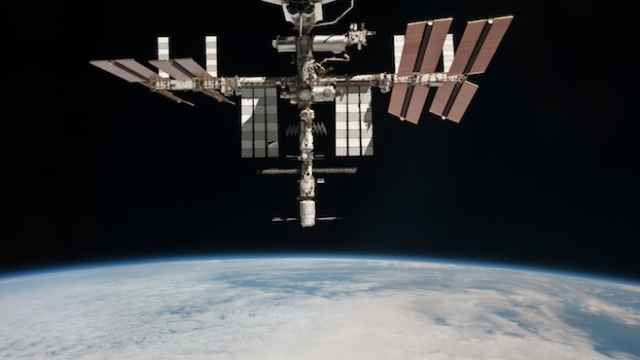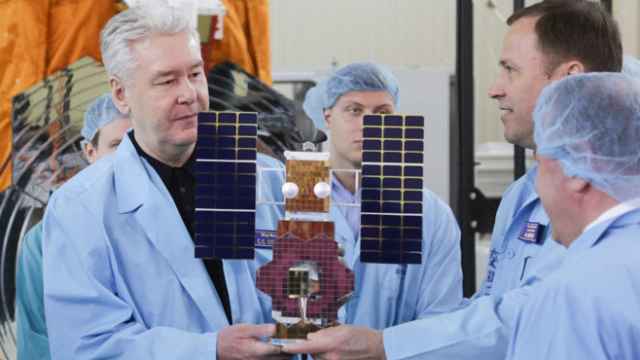Russia’s new Angara space rocket will make its commercial debut in 2017, with the company responsible for selling it on the global market announcing that it is actively marketing the rocket in the hopes of regaining Russia’s lost dominance in the commercial space race.
International Launch Services (ILS), a Virginia-based subsidiary of Russia’s Khrunichev State Research and Production Space Center that is responsible for selling certain Russian rockets to international customers, announced last week that the Angara 1.2 rocket will be available to customers in two years.
ILS is best known for selling Russia’s Soviet-designed Proton-M rocket for commercial satellite launches. Until last year, the firm enjoyed a 30 percent share of the market, but a series of Proton launch failures and the conflict in Ukraine has eroded their position.
The Angara announcement has been carefully timed. The U.S. space industry unseated Russia as the dominant market player in 2014, taking a 50 percent of new launch contracts and a market share of 40 percent.
However, satellite providers are itching for a third option in a market dominated by the California-based SpaceX and France’s Arianespace launch firm.
Contributing to this demand for a new player is a proliferation of small satellites across the globe, according to Rachel Villain, principal space analyst at consulting firm Euroconsult. But Angara’s success in this market is not guaranteed.
“Angara is promoted as the answer to Proton and [the] Russian launch industry’s issues but its success relies on several conditions, such as the industry reform, to make Angara a good answer,” Villain said.
Last year the global revenue for the commercial satellite launch market was just under $6 billion, according to the Satellite Industry Association’s annual State of the Satellite Industry Report.
All-Purpose Rocket
Russia’s new Angara family of rockets are the first space launch vehicles designed by Russia since the fall of the Soviet Union. Produced by Khrunichev, one of Russia’s largest space industry enterprises, the new vehicles are supposed to replace the venerable Proton rockets by 2025.
Proton rockets have experienced several high-profile launch failures in recent years, and “Russian launch providers experienced a dramatic drop in orders [in 2014] due to reliability issues and the Ukraine conflict,” according to the Satellite Industry Association’s report.
The Angara rocket family is based on a modern modular approach to rocket design that allows the size of the rocket to be tailored to the weight of its payload — an approach also featured in the design of the Falcon family of rockets designed by California-based SpaceX.
“The Angara system is scalable to meet various performance requirements, and the use of common technology will create production efficiencies in the factory,” Khrunichev CEO Andrei Kalinovsky was quoted as saying in an ILS statement. “This translates into cost savings for customers,” he added.
ILS is starting small with the commercial debut of Angara. Beginning in 2017, the Angara 1.2 light booster, which can launch satellites weighing up to 3 tons, will be available for purchase and will launch from Russia’s northern cosmodrome in Plesetsk, near Arkhangelsk.
Russian space industry analyst Pavel Luzin pointed out that “the Plesetsk launch site is for high-latitude and polar orbits, which are not popular for commercial launches.”
According to the company, the heavy Angara A5 — which can lift up to 25 tons — will be available to customers “in the 2021 time frame, following completion of the Vostochny Cosmodrome launch site located in eastern Russia,” the statement said.
Market Opportunity
To fill the gap between the debut of the light and heavy Angara rockets, ILS will continue to sell the Proton rocket on the market for the heavier lift segments of the market.
But according to Euroconsult’s Villain, heavy satellite launch demand is expected to remain relatively consistent over the next several years, while all the growth will be in the light satellite launch market.
The Angara 1.2 “aims to capture what is seen as a growing demand driven by small satellites,” Villain said. “This makes sense given that current capabilities [in that segment of the launch market] cannot absorb the demand,” she added.
Angara’s competition in this market is French space firm Arianespace’s light Vega rocket. According to ILS president Phil Slack, “the Angara 1.2 has significantly higher performance than Vega and other small launchers at a more affordable price tag.”
When asked what Angara 1.2 will cost, ILS spokesperson Karen Monaghan said only “the Angara 1.2 vehicle will be priced very competitively for the market,” without revealing pricing details.
Luzin doubts the rocket's commercial viability, citing extremely high R&D costs since the Angara project began in the 1990s. Furthermore, “I am not sure about our industrial capabilities,” Luzin said, “nobody knows how many Angara launch vehicles we will be able to produce in 2017 or later.”
SpaceX is marketing its Falcon 9 light launch and Falcon Heavy rockets at prices ranging from $60 to $90 million per launch. The company promises to drastically reduce its prices if it succeeds in perfecting techniques to reuse parts of its rockets.
ILS announced the debut of the Angara 1.2 soon after a SpaceX Falcon 9 launch failure in June, which will ground the U.S. company for a few months. SpaceX’s backlog is also tied up with NASA contracts and other large orders from satellite operators.
This leaves satellite operators with fewer options for launch services, and they are looking for a third option to diversify away from SpaceX and Arianespace, which have pushed out ILS to form a market duopoly.
Last month, the heads of Luxembourg-based SES and France’s Eutelsat, two of the world’s three largest satellite operators, said they would do whatever it takes to support the emergence of a third launch provider to ensure that they have more options if SpaceX or Arianespace rockets are unavailable either due to a launch failure or high demand, SpaceNews reported.
But Angara is not guaranteed to fill this hole when it begins launching in 2017. Other firms looking to get into the space launch business have their eyes set on the small satellite market, and at least three new light rockets are in development, Villain said.
Luzin added that “Angara 1.2 will compete not only with Arianespace or SpaceX, but also with [Russia's] Soyuz as well as with Chinese, Indian and Japanese launch vehicles.”
Also working against Angara is the sad state of Russia’s space industry and the Khrunichev company in particular. Khrunichev is often described by space industry officials as being in a state of systemic crisis, and production quality has dropped — contributing to the string of failures of the Proton rockets Angara is supposed to replace.
Contact the author at m.bodner@imedia.ru
A Message from The Moscow Times:
Dear readers,
We are facing unprecedented challenges. Russia's Prosecutor General's Office has designated The Moscow Times as an "undesirable" organization, criminalizing our work and putting our staff at risk of prosecution. This follows our earlier unjust labeling as a "foreign agent."
These actions are direct attempts to silence independent journalism in Russia. The authorities claim our work "discredits the decisions of the Russian leadership." We see things differently: we strive to provide accurate, unbiased reporting on Russia.
We, the journalists of The Moscow Times, refuse to be silenced. But to continue our work, we need your help.
Your support, no matter how small, makes a world of difference. If you can, please support us monthly starting from just $2. It's quick to set up, and every contribution makes a significant impact.
By supporting The Moscow Times, you're defending open, independent journalism in the face of repression. Thank you for standing with us.
Remind me later.






